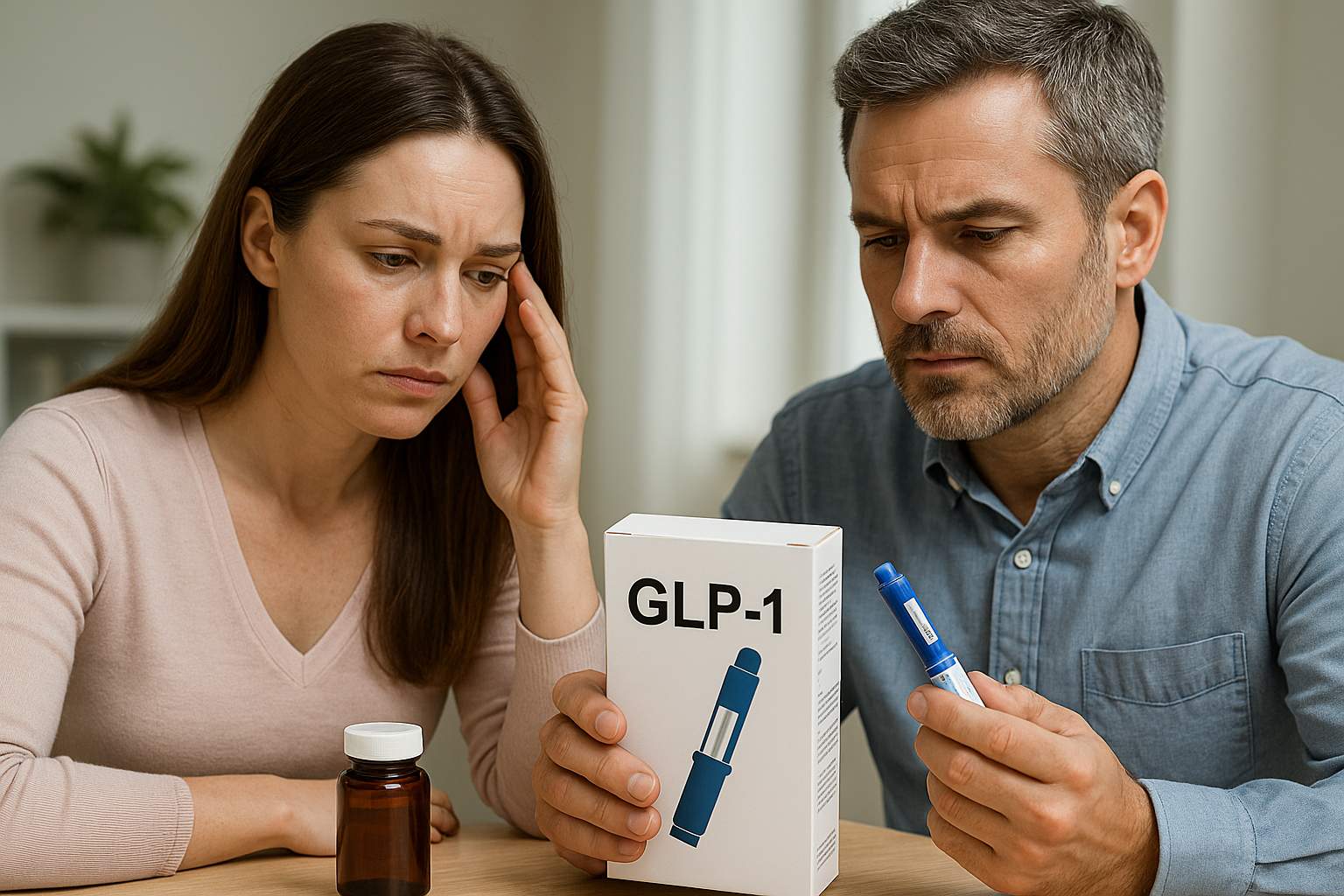
What if one class of medications could help tackle both chronic migraines and low testosterone? GLP‑1 therapies, originally designed for diabetes and weight loss, are now being studied for broader health benefits. From easing the throbbing pain of frequent migraines to potentially boosting hormone levels in men, these drugs are showing unexpected promise.
As chronic illness patients and caregivers look for more comprehensive treatment options, this emerging research offers hope—and new questions.
Table of Contents
- What Are GLP‑1 Therapies?
- Can GLP‑1 Therapies Reduce Chronic Migraine?
- GLP‑1 Therapies and Testosterone: A Surprising Link
- Safety, Side Effects, and What to Ask Your Doctor
- Conclusion
- FAQs
What Are GLP‑1 Therapies?
GLP‑1 therapies are medications that mimic the effects of glucagon-like peptide-1, a hormone that helps regulate blood sugar and appetite. These therapies have gained attention for their role in treating type 2 diabetes and obesity. Popular branded examples include Ozempic, Wegovy, Mounjaro, and Rybelsus.
However, their benefits might go well beyond blood sugar and weight. New studies suggest they may offer relief for other chronic conditions—including chronic migraine and low testosterone levels in men.
Originally developed to enhance insulin response, GLP‑1 receptor agonists also influence other body systems like the nervous and endocrine systems. Because of this, researchers are exploring how these medications could affect headaches, hormone production, and even mental health.
Can GLP‑1 Therapies Reduce Chronic Migraine?
In a recent study conducted by Danish researchers and highlighted by Drugs.com, a group of participants with chronic migraine and obesity experienced a dramatic reduction in migraine days when using the GLP‑1 drug liraglutide. Over the course of 17 weeks, monthly migraine days dropped from 20 to just 9. That’s more than a 50% reduction.
Even more promising? Participants also reported significant improvements in disability scores tied to migraines. These results are especially encouraging given that the relief seemed to stem from something other than weight loss. Scientists believe a reduction in intracranial pressure could be a key reason behind the drop in migraine frequency.
For people managing both obesity and frequent migraines, this development could be a game-changer. It’s not just about fewer headache days—it’s about better quality of life. And for patients already using GLP‑1 therapies to manage diabetes or weight, this added benefit could provide extra motivation to stay on course.
You can explore more trending articles on chronic pain and therapies on our Top Articles page.
GLP‑1 Therapies and Testosterone: A Surprising Link
Low testosterone affects millions of men, particularly those struggling with obesity or type 2 diabetes. At this year’s ENDO 2025 conference, a new study revealed that GLP‑1 medications may significantly raise testosterone levels in these populations.
Researchers studied over 1,200 men taking semaglutide, dulaglutide, or tirzepatide. They discovered that over an 18-month period, testosterone levels in the “normal” range increased from 53% to 77%. That’s a massive improvement—and it came alongside an average weight loss of 10%.
These hormonal changes could translate into improvements in energy levels, sexual health, mood, and muscle strength—all major concerns for men with low testosterone. Although the mechanism behind this shift is still under investigation, researchers speculate that fat loss plays a key role, particularly around the abdomen, where fat stores may suppress hormone production.
Men experiencing symptoms of low testosterone might benefit from discussing these findings with their doctors. Especially if they also have diabetes or are overweight, GLP‑1 therapies might offer dual advantages.
Before making any treatment decisions, however, consult a provider through a trusted site like Healthcare.pro to ensure it’s right for your situation.
Safety, Side Effects, and What to Ask Your Doctor
While the benefits are encouraging, it’s important to weigh them against potential side effects. GLP‑1 therapies are generally well tolerated, but they can cause:
- Nausea
- Constipation
- Diarrhea
- Injection site reactions
- Rare complications like pancreatitis or gallbladder issues
In very rare cases, patients have reported vision changes or worsened depression, particularly when taking the drugs for non-FDA-approved uses like migraine or hormone support.
Before starting a GLP‑1 therapy for anything beyond diabetes or obesity, talk to your doctor. Ask:
- Is this use FDA-approved or off-label?
- What monitoring is required?
- Could this interact with my other medications?
- Are there alternative treatments for my condition?
Transparency is essential. And while some patients might be eager to use these drugs for multiple chronic conditions, not every use is backed by large-scale studies—yet.
If you’re a healthcare marketer or health brand professional looking to promote accurate information around emerging treatments, consider using eHealthcare Solutions to reach targeted audiences effectively.
Conclusion
GLP‑1 therapies are no longer just for diabetes or weight loss. As studies evolve, they may hold promise for reducing chronic migraine and improving testosterone levels in men. For patients with overlapping conditions, this could mark a new era of multi-benefit treatments.
Of course, no drug is a cure-all. Speak with your doctor, stay informed about the latest research, and continue advocating for your own well-being. For more updates on chronic illness treatment breakthroughs, visit our top articles section.
FAQs
What are GLP‑1 therapies commonly used for?
They are FDA-approved treatments for type 2 diabetes and weight loss. Brands like Ozempic and Wegovy are among the most well-known.
Can I take GLP‑1 medications for migraines?
While early research shows potential, this use is not yet FDA-approved. Talk to your doctor about risks and benefits.
How do GLP‑1 drugs affect testosterone levels?
They may indirectly boost testosterone by promoting fat loss and improving metabolic health in men with obesity or diabetes.
Are there serious side effects from GLP‑1 therapies?
Most side effects are mild, like nausea or constipation. Rare but serious risks include pancreatitis or gallbladder problems.
Is this treatment right for me?
Only a qualified healthcare provider can determine that. Schedule a consult via Healthcare.pro for personalized advice.
This content is not medical advice. For any health issues, always consult a healthcare professional. In an emergency, call 911 or your local emergency services.




